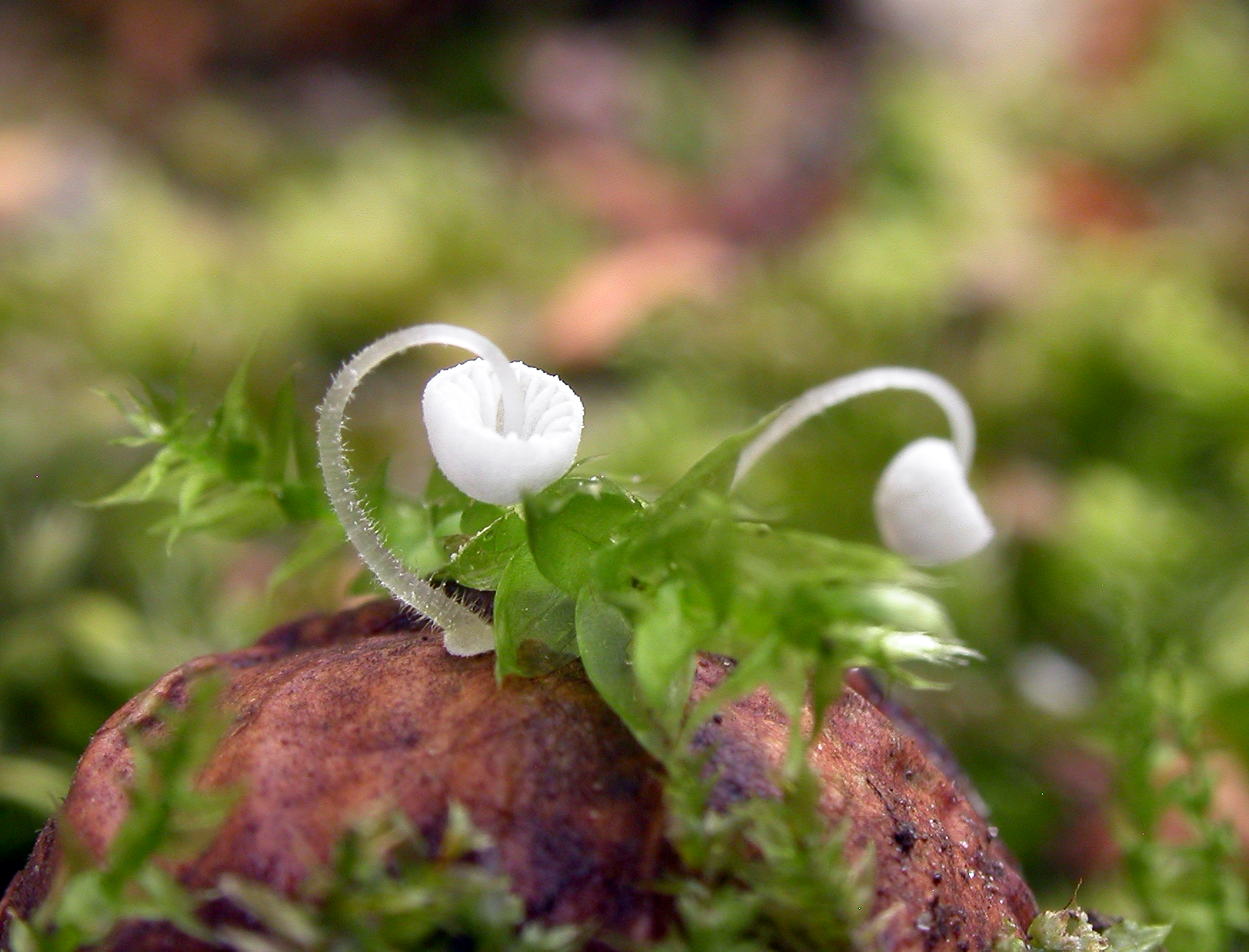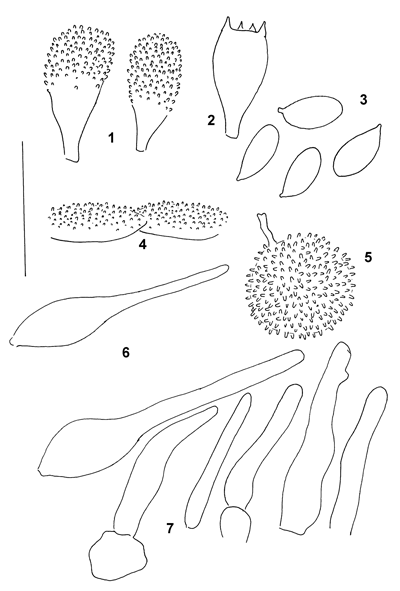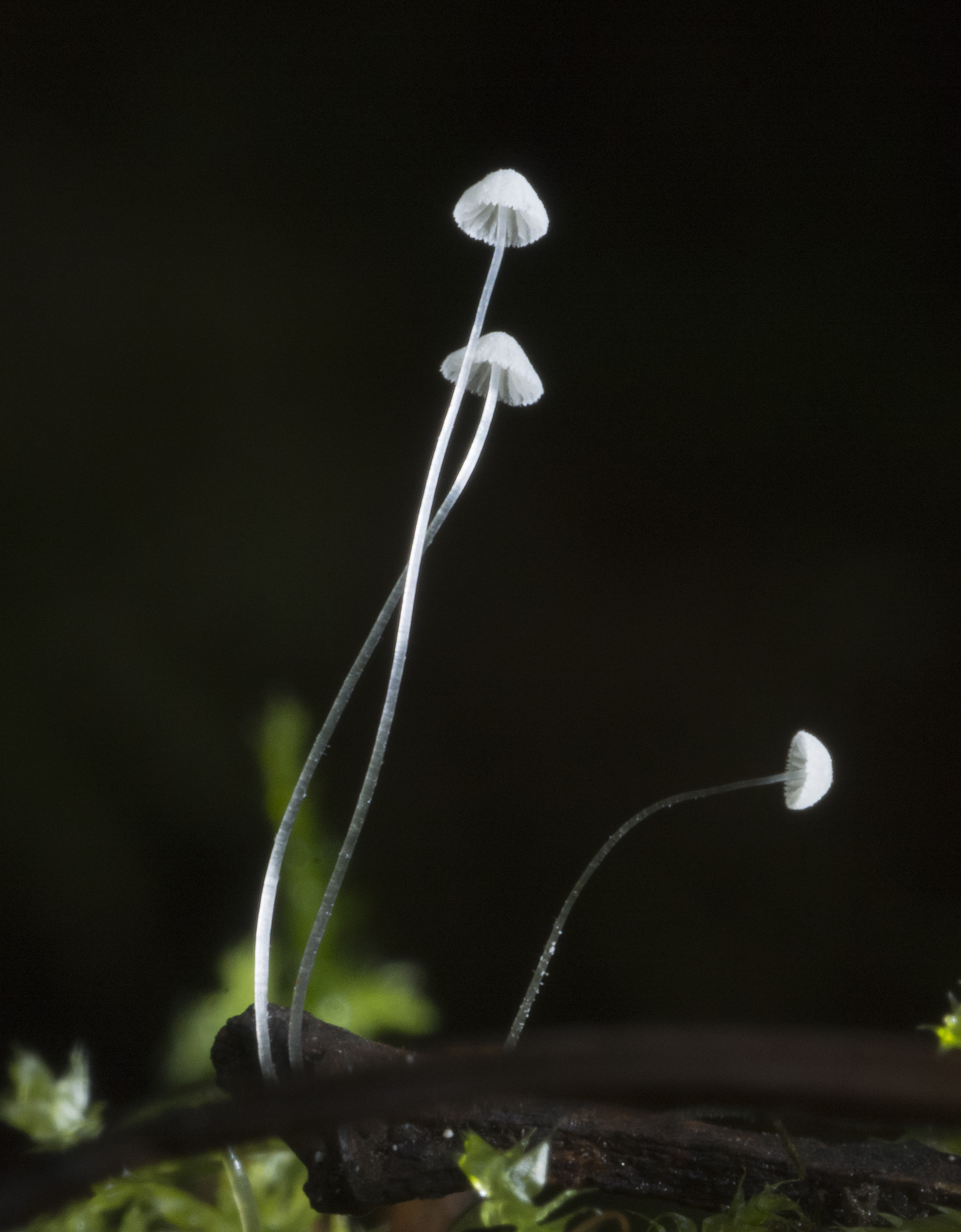Mycena nucicola
Mycena adscendens
Description
1. Cheilocystidia. 2. Basidium. 3. Spores. 4. Hyphae of the pileipellis.
5. Terminal cell of the pileipellis (acanthocyst). 6. Two caulocystidia.
7. Basal disc cystidia (smooth type).
Cap 1.5-5 mm across, at first conical, becoming parabolical with age, translucent-striate when old, shallowly sulcate, furfuraceous or floccose, becoming puberulous to glabrous, white. Gills 11-13, not always reaching the stem, the edge convex, adnexed, white. Stem 10-30 x 0.2-0.3 mm, cylindrical, equal, the base somewhat bulbous, entirely pubescent or hairy, glabrescent, watery greyish, with age more whitish, with a very small basal disc, which is almost disappearing with age. Basidia c. 17 x 8 µm, clavate, 4-spored. Spores (7-)8.2-8.8 (-10) x (3.8-) 4.5-4.5 (-5.5) µm, Q ˜ 1.8, pip-shaped, amyloid. Cheilocystidia 15-26 x 8-16 µm, clavate, densely covered with evenly spaced, short excrescences, with or without a shorter or longer, often flexuous rostrum. Pleurocystidia absent. Lamellar trama dextrinoid. Hyphae of the pileipellis 3.5-15 µm wide, densely covered with narrow, short excrescences; the terminal cells broadly clavate to globose, 17-30 x 11-25 µm wide, densely covered with short excrescences 0.5-1.5 x 0.5 µm (acanthocysts). Hyphae of the cortical layer of the stem 4-8 µm wide, smooth, caulocystidia 40-100 µm long, smooth, thin-walled, lanceolate, acute, with a broadened base 9-17.5 µm wide. Hyphae of the basal disc terminated by cells of two types: 1) elements similar to the caulocystidia, up to 50 µm long, clavate or lanceolate, entirely smooth or 2) elements similar to those on the pileipellis, 15-40 µm, clavate to subglobose, densely covered with short excrescences (acanthocysts). Clamps rare to apparently absent.
Ecology and distribution
Growing on fallen Corylus fruits. Summer to autumn. Very rare.


